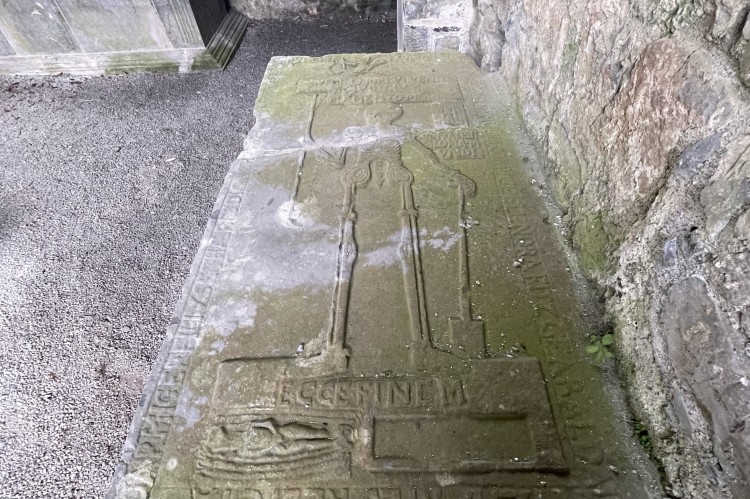Aug
02
2023
Close to the heart of Kilmallock town lies the ruins of Kilmallock Collegiate Church and Graveyard, dedicated to St. Peter and St. Paul. It is located in the townland of Deebert, in the parish of Kilmallock/Ballingaddy, in the Barony of Connello Upper. The ruins are located on the south bank of the Loobagh River, on Orr’s St., north of the town’s main street.
The graveyard which surrounds the church is sub-rectangular in shape and measures 63m N-S x 78m E-W. It is enclosed by a post-1700 stone wall. Boundary walls usually date to the 17th/18th centuries when many graveyards were enclosed. The entrance is on the south side. The memorials are both inside and outside the church walls and range in date from the early 17th century to the present day.
A total of 487 memorials were counted and recorded. A graveyard is generally as old as the first church on site, suggesting that there have been continuous burials taking place here well over a thousand years, resulting in many thousands of graves.
Surnames include Quinlan, Holmes, Cunningham, McConnell, Evans, Meade, Lynch, Fleming, O’Donnell, Malone, Orr, Flynn, Phair, Gleeson, Jones and O’Callaghan, (Historicgraves.ie).
Some well preserved ledger stones and box tombs decorated with detailed engravings, inscriptions and family coat of arms are located in the south transept. For example, there is a chest tomb dated to 1627, marking the burial place of the Verdon-Coppinger Family. The upper slab is beautifully adorned with effigial sculptures of a man and a woman in Elizabethan costumes, two winged angels with trumpets and a coat of Arms. The inscription is in latin. (Archaeology.ie).
Other early elaborate commemorations with coats of arms can be found dedicated to Thomas Fitzgerald, 1630 (memorial no. 0038-D), Anastacia Verdon, 1632, The Burgate family, 1642, and Elizabeth Webb, 1684 (memorial no.0045-D). Some beautiful examples of 18th and 19th century memorials are found throughout the graveyard.
Interesting Facts
The earliest remains of the church date to the mid-13th century and are built on the site of a 7th century church and monastery. This earlier church was dedicated to St. Mocheallog, who was an abbot and a bishop.
It is called a Collegiate because it was managed by a college of clerics rather than monks. The ruins are large enough for them to be that of a cathedral, but as it was never overseen by a bishop, the church was never called a cathedral.
The church was almost completely destroyed by Cromwell’s Forces in the 17th century and later by a fire in 1935.
The church has three aisles, a chancel and a north transept.
The burial place of Lieutenant William Blakeney of Thomastown, 1664 is commemorated with a chest tomb in the roofed transept. It is decorated with a family coat of arms. He was granted lands in Thomastown, south west of Kilmallock where his family owned the Mount Blakeney Estate.
17th and 18th Century memorials in Kilmallock Collegiate
0026-A Michael Jones 1794
0060-C Thomas Phayer 1799
0063-C Laurence Gleeson 1779
0095-C Timothy O’Donnell 1794
0005-D Ellinor Flemming 1780
0042-D William Blackney 1664
0045-D Elizabeth Webb 1684
0038-D Thomas Fitzgerald 1630
Also Anastasia Verdon 1632 and a plaque to the Burgate Family 1642. These two are not in the Historic graves survey but are mentioned in Archaeology.ie.
This post was researched and written as part of a grassroots heritage tourism project (www.incultum.eu) in collaboration with Ballyhoura Development CLG (https://www.ballyhouradevelopment.com/), Cork Co. Council (https://www.corkcoco.ie/en) and Limerick Co. Council (https://www.limerick.ie/council). The stories were initially gathered during a community survey of the graveyard. They form part of the Historic Graves Project Destination for Ballyhoura (https://historicgraves.com/destination/ballyhoura).



